Photo: Laura Burns (left) and C-Jae Breiter (right), both Conservation & Research Specialists at Assiniboine Park Conservancy
Burrowing owls, once common across western Canada, are now considered an endangered species. Since 2010, Assiniboine Park Conservancy (the Conservancy) has worked with the Manitoba Burrowing Owl Recovery Program (MBORP) in their efforts to help save the species in Manitoba. This summer, for the first time since 2011, wild nesting burrowing owls were observed here in Manitoba!
Saving Manitoba’s Burrowing Owl Population
MBORP was established in 2010 to promote the recovery of the endangered burrowing owl through reintroduction, research, and education. This involves a breeding and release program in southwestern Manitoba, which is supported by the Conservancy’s Veterinary and Conservation and Research teams.
Owls that are part of this program are brought to the release site, and they are initially placed in temporary enclosures for their protection. These temporary enclosures have artificial nest burrows dug into the ground under them, and once the owls have paired up and laid eggs, the temporary (soft-release) enclosures are removed as the owls are unlikely to abandon their nest once they have laid their eggs. At this time, the owls are able to hunt on their own, which is a very important step to surviving in the wild!
The owls are monitored throughout the breeding and rearing season and are provided supplemental food to ensure they and their young have a greater chance of survival. By the end of the summer, some young owls are removed from nests, based on their sex and genetics, and these owls become the following year’s breeding and release pairs. All other owls may then migrate south for the winter.
With cooperation from local landowners, MBORP has released 122 adult owls (61 pairs) who were hatched and fledged 124 young since 2010.
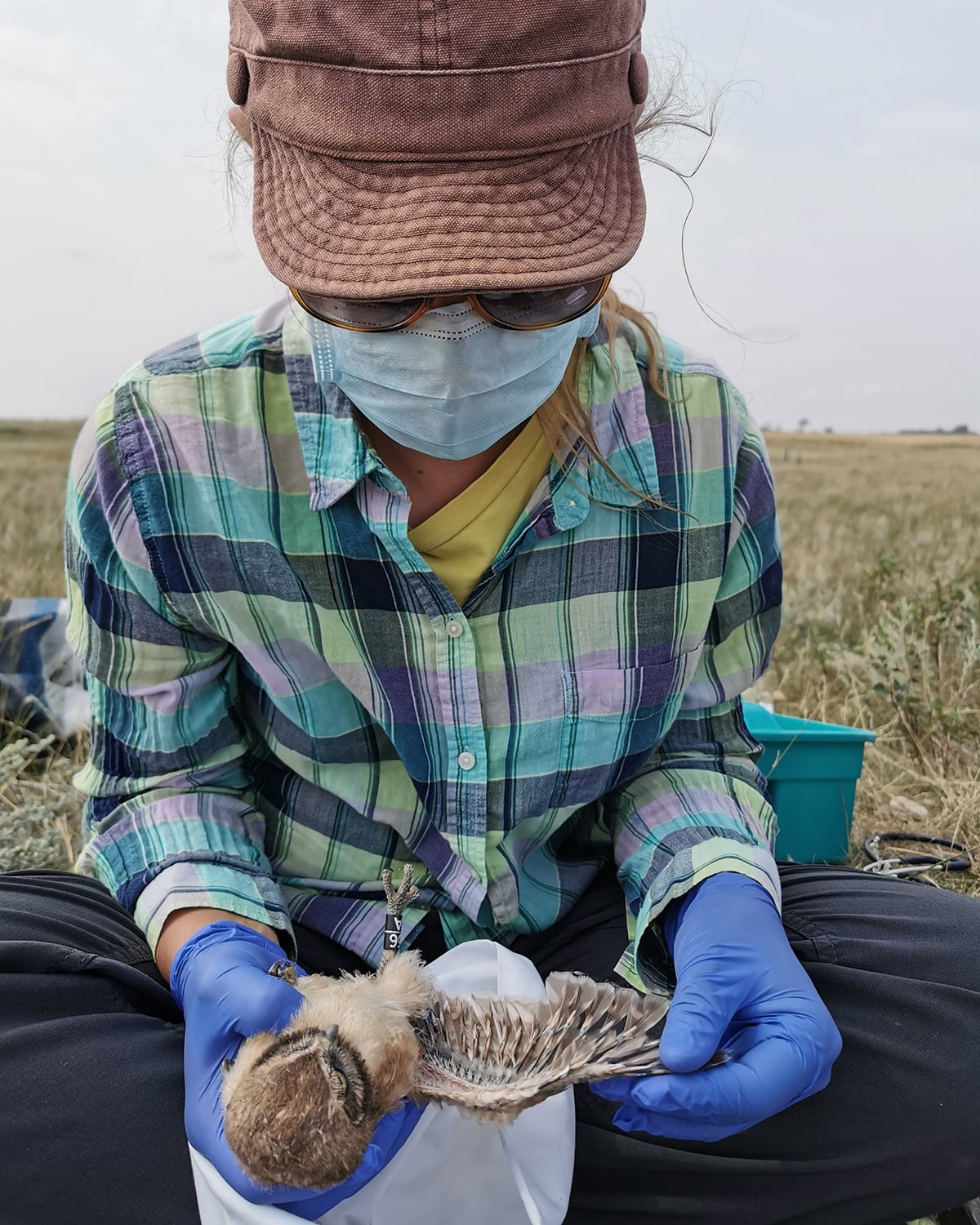 Dr. Charlene Berkvens, Associate Zoo Veterinarian, examines a burrowing owl in the field.
Dr. Charlene Berkvens, Associate Zoo Veterinarian, examines a burrowing owl in the field.
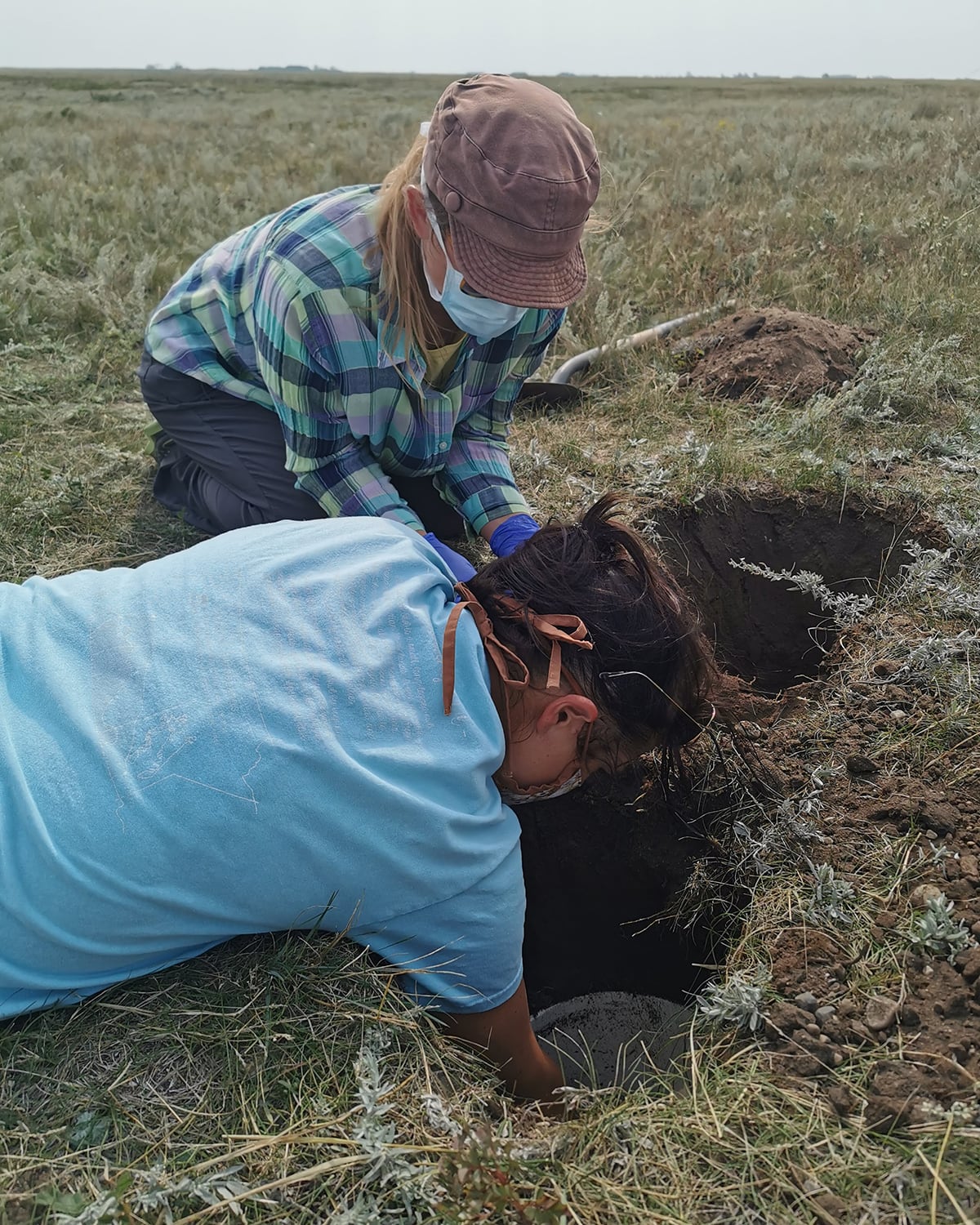 Dr. Berkvens and Alexandra Froese, MBORP Executive Director, at an artifical nest burrow.
Dr. Berkvens and Alexandra Froese, MBORP Executive Director, at an artifical nest burrow.
The Conservancy has proudly supported MBORP since its inception. Our Veterinary and Conservation and Research staff provide support in the field, which includes health checks, blood sampling, and help with artificial nest burrow installations, as well as overwintering support.
Blood samples are taken to the research lab at the Zoo to identify the sex of the owl genetically. It is almost impossible to visually determine if a young burrowing owl is male or female as they are identical in appearance. This information is critical to plan for future breeding pairs.
Owls that are retained for breeding are cared for at the Zoo over the winter months. To ensure that the owls do not habituate to humans during their time in human care, feeding and any medical treatments are completed with minimized human interaction. Prior to their return to the field, Zoo animal care staff help prepare the owls for life in the wild through live prey training.
Our veterinary staff provide routine preventative and reactive medical care to the owls throughout their journey at the field site as well as at the Zoo. The veterinary team also investigates all causes of burrowing owl deaths, as this is extremely critical to understanding the impact of health and disease on the wild owls. In addition, the Conservancy provides financial support to MBORP through the Wildlife Conservation Fund, and facilitates strategic planning workshops for the recovery of this species in Manitoba.
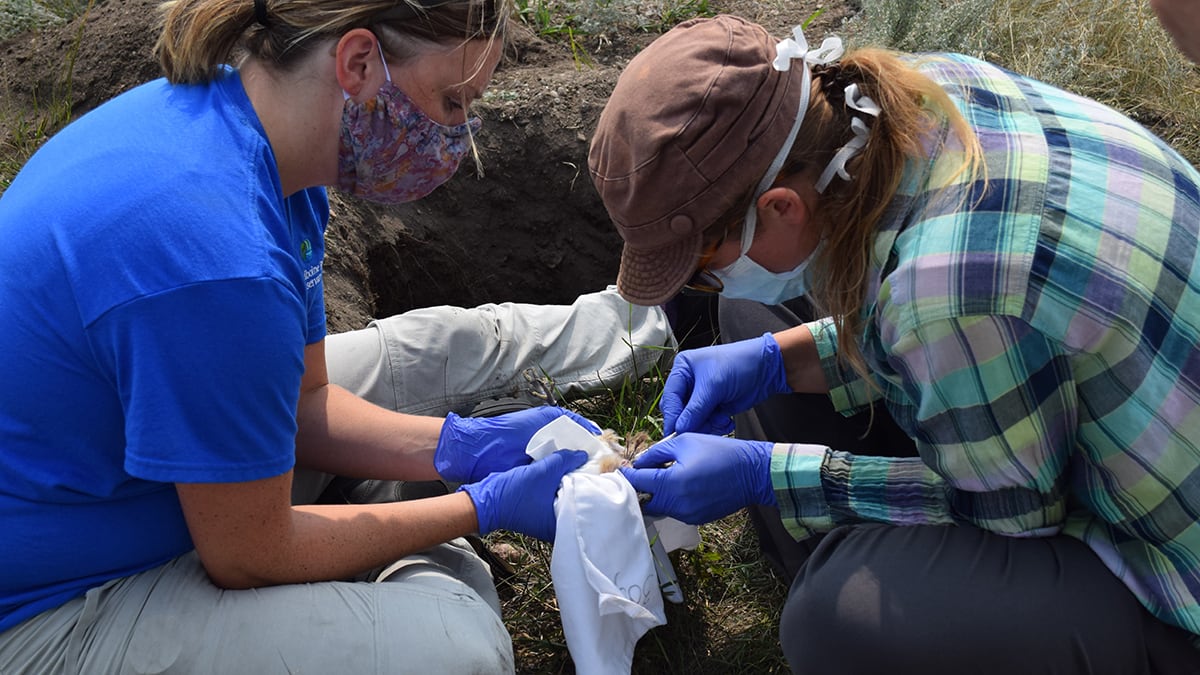 C-Jae Breiter, Conservation & Research Specialist (left) and Dr. Berkvens (right) work with a burrowing owl in the field.
C-Jae Breiter, Conservation & Research Specialist (left) and Dr. Berkvens (right) work with a burrowing owl in the field.
A Major Milestone
This summer, for the first time since 2011, wild nesting burrowing owls were observed here in Manitoba! One wild pair used a natural burrow, while a second wild pair nested in an artificial nest burrow that MBORP installed in 2017 near Pierson, Manitoba. The landowner contacted MBORP when he observed a burrowing owl on a fence post and the wild pair hatched and successfully raised six young.
These were the first wild young burrowing owls observed and banded in Manitoba since 2011. After nearly 10 years of not observing any wild owls, fingers are crossed that with ongoing conservation support, the burrowing owl can return to the prairies in increasing numbers in the years to come.
All About Burrowing Owls
Although once a common summer resident of the Canadian prairies, the burrowing owl population has seen steep and steady declines throughout its range. Since 1987, the population has declined by over 96%. It's estimated that between 500 and 800 owl pairs currently breed in Canada. In Manitoba, the population has declined from over 100 pairs in the early 1980s to under 10 pairs in 2012.
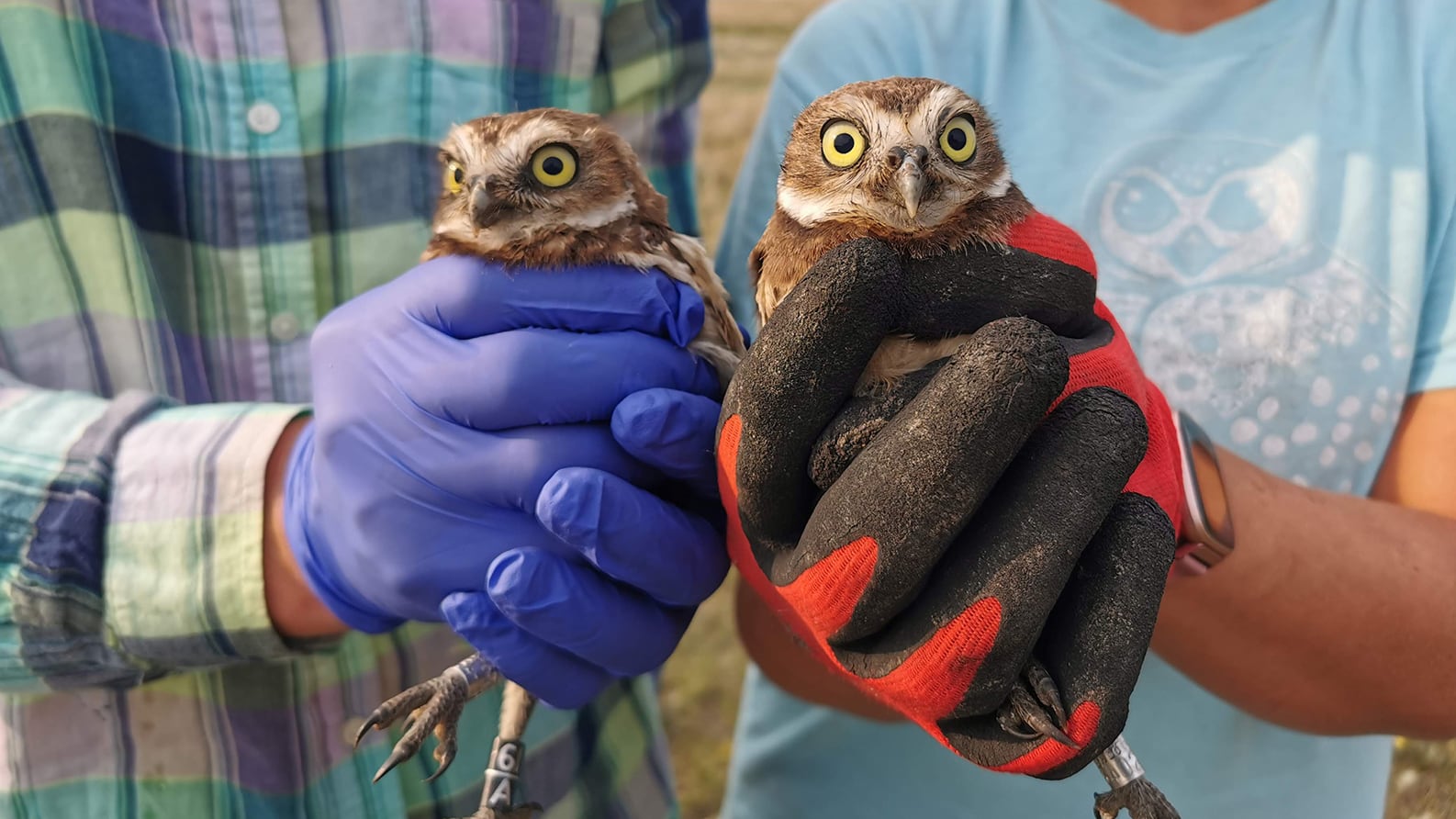 Since 1987, the burrowing owl population has declined by over 96%.
Since 1987, the burrowing owl population has declined by over 96%.
Despite their name, burrowing owls do not dig their own burrows. They decorate and renovate nest burrows which are dug by other animals like badgers, ground squirrels, foxes, and prairie dogs. One of the pairs of wild burrowing owls observed here in Manitoba this summer was using a badger burrow!
Since the start of MBORP’s field activities in 2010, over 200 artificial nest burrows have been installed on private land and community pastures in southwestern Manitoba. Artificial nest burrows are designed to provide a safe place for owls to nest, offering more protection from predators than a naturally dug burrow.
The History and Future of MBORP
MBORP is dedicated to addressing the ongoing decline of burrowing owls in southwestern Manitoba. In addition to the reintroduction program, they are also involved in research and education.
MBORP collects data on the breeding of both captive-released and wild burrowing owls. This is used to assess current and emerging threats to the species including the effects of human development and a changing climate on prey availability. It is then shared with outside organizations and researchers to facilitate research efforts in Manitoba, across Canada, and in the United States.
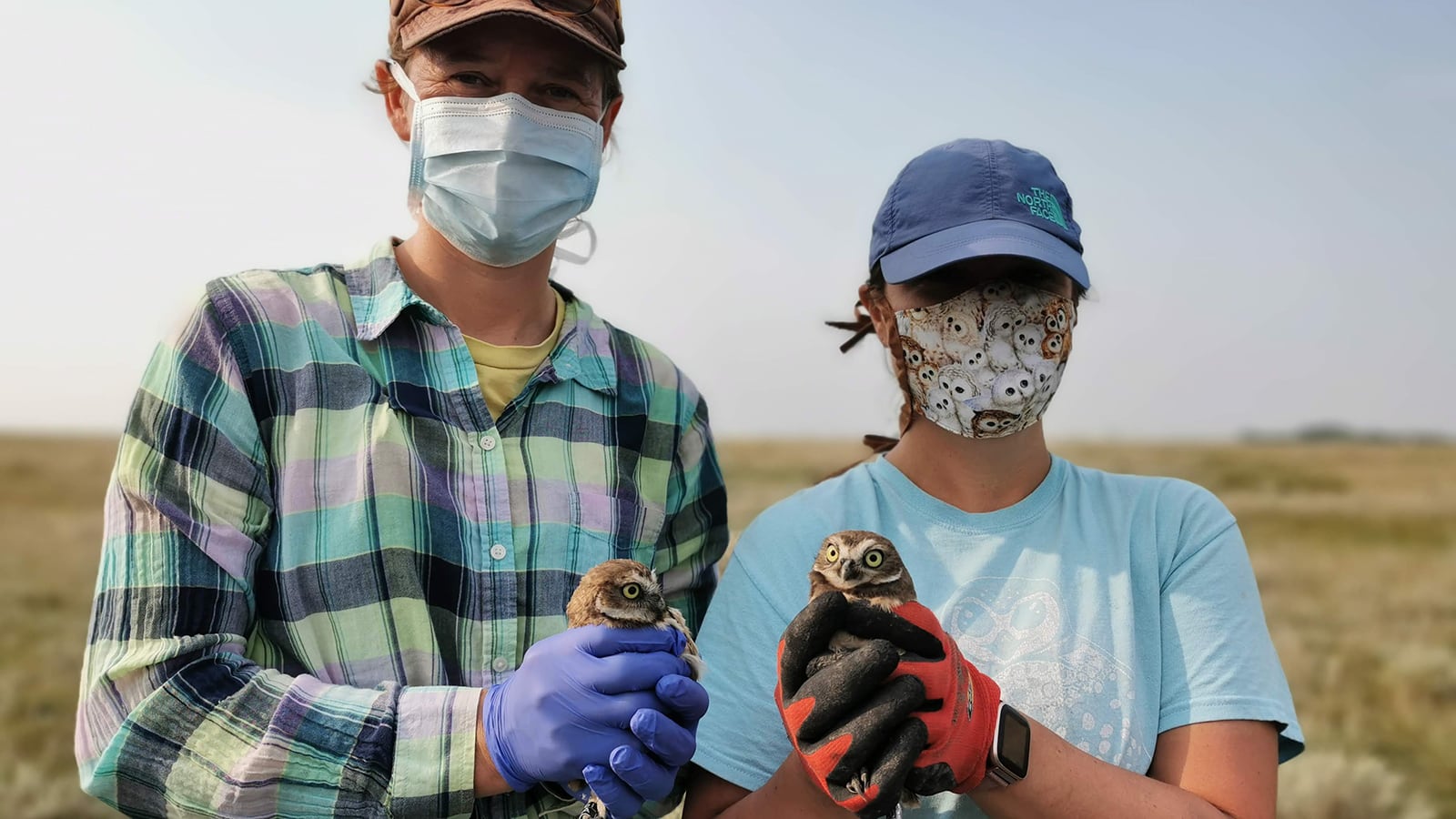 Dr. Berkvens (left) and Alexandra Froese (right). We are proud to support MBORP in their efforts to save Manitoba's burrowing owl population.
Dr. Berkvens (left) and Alexandra Froese (right). We are proud to support MBORP in their efforts to save Manitoba's burrowing owl population.
Public education is another priority for MBORP, which is accomplished through community presentations and meetings with landowners to discuss habitat stewardship and enhancement to lands, such as the installation of artificial nest burrows. MBORP also connects with thousands of people across southern Manitoba to discuss the challenges that burrowing owls face, what MBORP is doing to help the species, the importance of native prairie habitat, grassland conservation for species at risk, and how the public can help.
MBORP operates through private and public funding and works in cooperation with several program partners, including Assiniboine Park Zoo. In recent seasons, MBORP has experienced shortfalls in funding for the breeding and release component of the program. Moving forward in 2021, they intend to continue the recovery program in a reduced capacity focusing on surveys and monitoring, habitat enhancement, and education and outreach.
While the Conservancy’s ongoing role with the program is uncertain at this time, we will continue to support this important conservation effort to the extent we are able to through veterinary and animal care, field assistance, and collaborative research efforts.
If you’d like to support MBORP directly, click here to visit their Canada Helps donation page. For more information about the Manitoba Burrowing Owl Recovery Program:
Visit the MBORP website
Facebook: The Manitoba Burrowing Owl Recovery Program
Instagram: @kokoandbindi





